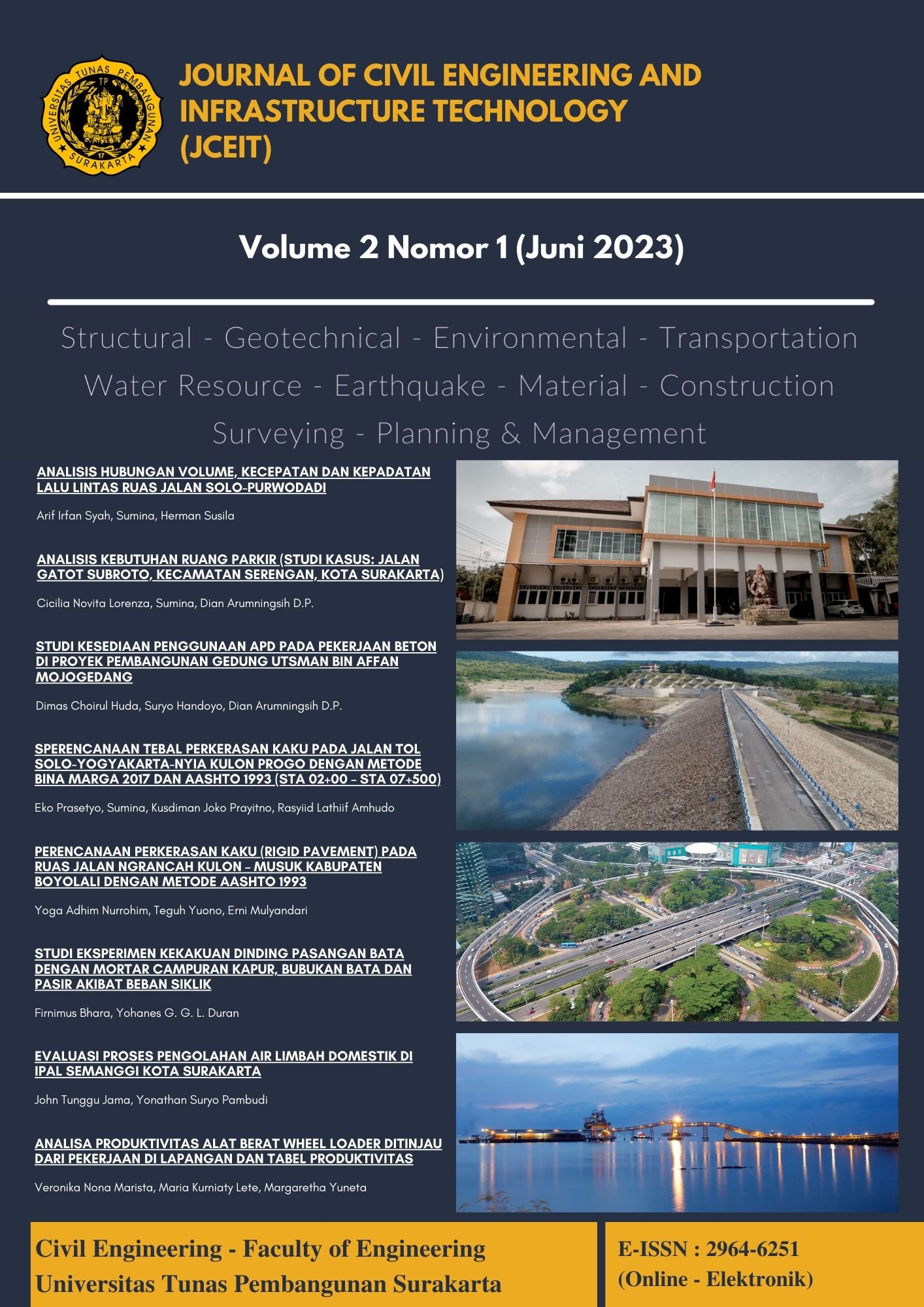EVALUASI PROSES PENGOLAHAN AIR LIMBAH DOMESTIK DI IPAL SEMANGGI KOTA SURAKARTA
Abstract
Wastewater is a material or residual result of unused activities that can have a negative impact on the environment and society if not handled properly. Inappropriate handling of domestic waste will cause disruption of environmental conditions caused physically, chemically, and biologically. This study aims to evaluate the wastewater treatment method at the Semanggi WWTP by analyzing and comparing the quality of wastewater received (influent) with the treated wastewater (effluent), and calculating the efficiency of the treatment process. Domestic wastewater quality standards, which are analyzed include BOD5, COD, TSS, pH, Ammonia, and Total Coliform, based on PERMEN LHK No. 68 of 2016 concerning Domestic Wastewater Quality Standards. Primary and secondary data collection, field observation, and laboratory analysis of wastewater quality indicators are some of the study techniques used. The results showed that the wastewater treatment process at the Semanggi WWTP was able to reduce several wastewater pollutant parameters such as Biological Oxygen Demand (BOD5) with an efficiency of 78.28%, Chemical Oxygen Demand (COD) with an efficiency of 37.21%, Total Suspended Solids (TSS) with an efficiency of 41.14%, and was able to keep the effluent pH stable (8.06). In addition, the treatment process is also able to reduce Total Coliform wastewater with an efficiency of 32.01%, however, the decrease in Total Coliform currently does not meet quality standards. Meanwhile, the effluent ammonia parameter has actually increased compared to the influent so that the ammonia parameter has not been able to meet the quality standards.












